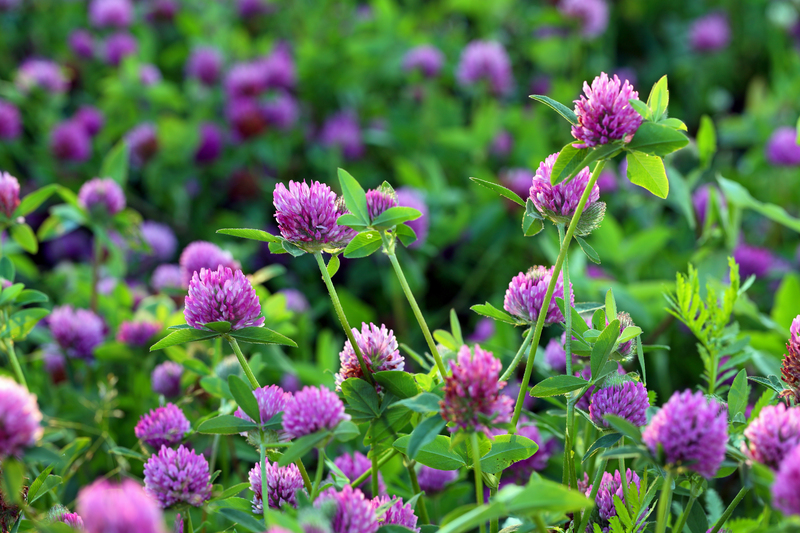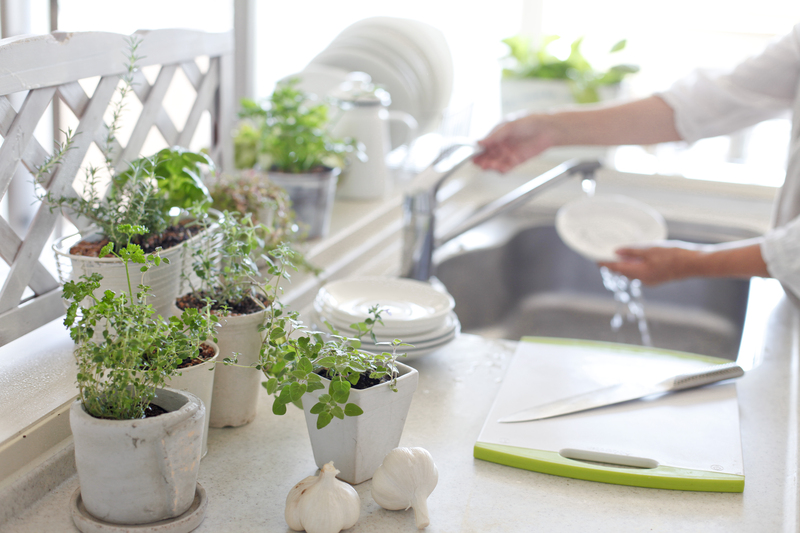Build Natural Screens for Privacy Using Innovative Landscaping Techniques
Looking for creative ways to enhance your yard's privacy without compromising on beauty? Learn how to build natural screens for privacy using innovative landscaping techniques. This comprehensive guide covers everything you need to know about installing living walls, layered plantings, and other eco-friendly privacy solutions for your outdoor space.

What Are Natural Privacy Screens?
Natural privacy screens are landscaping solutions that use living plants and organic materials to create barriers. These screens shield your yard, patio, balcony, or garden from prying eyes while adding greenery and improving your landscape's aesthetics. Compared to fences or artificial partitions, natural screens offer environmental, acoustic, and visual benefits.
Benefits of Natural Privacy Screens
- Eco-friendly: Living screens absorb carbon dioxide and provide habitats for pollinators and birds.
- Year-round beauty: With thoughtful plant selection, your natural screens enhance your landscape in every season.
- Noise reduction: Dense plantings block out city or neighbor noise, making your space more peaceful.
- Filtered sunlight: Layered plantings offer dappled shade without blocking all the light.
- Increased property value: Well-designed landscaping boosts curb appeal and resale value.
Innovative Landscaping Techniques for Building Natural Privacy Screens
Let's explore some innovative landscaping techniques to build stylish, sustainable, and effective living privacy screens.
1. Layered Plantings for Maximum Coverage
Layering plants in tiers mimics nature's design and provides full privacy coverage at different heights. Here's how to do it:
- Start with tall trees or shrubs: Choose evergreen or semi-evergreen species as your primary barrier. Examples: arborvitae, leyland cypress, holly, or Japanese cedar.
- Mid-layer plants: Add medium-sized shrubs like viburnum, photinia, or laurel for secondary screening and texture variation.
- Low groundcover and perennials: Fill gaps at ground level with low shrubs, ferns, or flowering plants.
Tips: Mix different foliage colors and textures for a lush, interesting look. Plant in staggered rows (zigzag pattern) rather than a straight line to enhance density and coverage.
2. Living Fences and Hedges
A classic and effective way to achieve natural privacy is by growing a living hedge or fence. This approach is both timeless and highly customizable.
- Evergreen hedges: Boxwood, privet, yew, and arborvitae stay green year-round and offer dense coverage.
- Flowering hedges: Forsythia, lilac, hydrangea, or butterfly bush add color and fragrance.
- Edible hedges: Blueberry, currant, or hazelnut bushes provide privacy and fruit harvests.
Innovative idea: Try a mixed hedge with 2-3 plant species for variety and enhanced wildlife benefits.
3. Green Walls and Vertical Gardens
Modern landscapes increasingly feature vertical gardens or green walls as living screens for privacy. They're perfect for urban spaces or where ground space is limited.
- Portable planters: Use stacked pots, hanging containers, or trellis systems along fences.
- Wall-mounted pockets: Plant small herbs, succulents, or trailing vines in modular wall pockets.
- Climbing plants on trellis: Grow jasmine, clematis, wisteria, or ivy to quickly cover a wall or pergola.
Advantages: Vertical gardens insulate your home, cool the air, and utilize unused vertical space.
4. Bamboo Screens for Quick Privacy
Bamboo is one of the fastest-growing plants and makes an excellent natural screen for instant privacy. It can grow up to several feet per season and forms a lush, dense barrier.
- Clumping bamboo: Opt for non-invasive clumping types like Fargesia or Bambusa, which stay where you plant them.
- Install root barriers: If using running bamboo varieties, install rhizome barriers to prevent spreading.
Tip: Regularly thin and prune bamboo to maintain density and appearance.
5. Espaliered Trees for Elegant Fencing
Espalier is a traditional but increasingly popular innovative landscaping technique that involves training trees to grow flat against a support structure.
- Space-saving: Perfect for narrow yards or against walls and fences.
- Fruit or flowering trees: Try apple, pear, or camellia for attractive, productive screens.
- Artistic designs: Espaliered trees can be trained into geometric patterns, adding visual intrigue.
Espalier guide: Start with young, flexible trees, and secure branches to a wire or wooden frame.
6. Natural Curtains with Ornamental Grasses
Ornamental grasses create beautiful, flowing privacy screens that sway in the wind and add a natural, wild touch to any garden.
- Tall varieties: Pampas, feather reed grass, switchgrass, and miscanthus grow to 4-10 feet tall.
- Low-maintenance: Grasses are drought-tolerant and require minimal pruning.
- Seasonal interest: Many species have eye-catching seed heads or colorful fall foliage.
Combine grasses with perennials or wildflowers for enhanced texture and a meadow-like effect.
7. Privacy Through Planting Berms and Raised Beds
Don't have a fence? Build low mounds or raised beds (berms) along property edges or seating areas. Fill these with lush plantings to increase height and privacy.
- Berms: Mounded earth, 1-3 feet high, planted with shrubs, grasses, and evergreens.
- Raised beds: Wooden or stone frames filled with privacy plants, vegetables, or flowers.
- Improved drainage: Raised plantings help with stormwater runoff and root health.
8. Living Pergolas and Green Roofs
Transform patios or decks with living pergolas or green roof structures for overhead privacy and shade.
- Vining plants on pergolas: Train grapes, honeysuckle, or passionflower to form natural canopies.
- Green roofs: Use sedums, grasses, and wildflowers on flat or gently sloped roofs for privacy above and added insulation.
- Outdoor rooms: Combine vertical and overhead screening for fully-private "outdoor rooms."
Planning Your Natural Privacy Screen
Key Considerations
- Privacy needs: Decide what you want to block: views, noise, or unsightly structures.
- Plant selection: Choose species adapted to your climate, soil, and sunlight.
- Growth rate: How quickly do you need coverage? Combine fast growers with slower, permanent choices.
- Maintenance: Review how much pruning, watering, and fertilizing each plant requires.
- Height and legal restrictions: Check local regulations regarding fence and plant heights.
Step-by-Step Guide to Building Natural Screens
- Assess your space: Map boundaries, measure distances, and note sunlight patterns.
- Design your screen: Sketch a planting layout, mixing heights and textures for coverage.
- Prepare the soil: Amend with compost, and ensure proper drainage.
- Select quality plants: Choose disease-resistant varieties from reputable nurseries.
- Plant with care: Space according to mature size and water thoroughly after planting.
- Mulch: Use organic mulch to retain moisture and suppress weeds.
- Establish a maintenance routine: Water, fertilize, and prune as needed for healthy, dense growth.
Best Plants for Natural Privacy Screens
Here are some top choices for building natural screens using innovative landscaping methods:
- Arborvitae ('Green Giant'): Fast-growing, evergreen, deer-resistant
- Bamboo: Rapid growth, tropical look - choose clumping varieties
- Boxwood: Classic, low-maintenance clipped hedge
- Holly: Dense, with winter interest from berries
- Pyracantha: Ornamental barrier with thorns and orange berries
- Ligustrum/Privet: Hardy, quick-growing, good for formal hedges
- Laurel: Broadleaf, glossy evergreen
- Viburnum: Many varieties, some evergreen, with spring blooms
- Pampas/Feather Reed Grass: Graceful movement, vertical interest
- Clematis, Honeysuckle, or Jasmine: For trellises and green walls
Maintaining Your Living Privacy Screens
Proper upkeep ensures your living privacy screens remain dense and attractive year-round:
- Water deeply: New screens need regular watering until established.
- Fertilize seasonally: Use slow-release organic fertilizers to promote lush growth.
- Prune for shape and health: Trim hedges, trees, and grasses to keep them tidy and dense.
- Pest and disease management: Inspect regularly and treat with eco-friendly solutions if needed.
- Mulch and weed: Thick mulch retains moisture and blocks weeds, reducing maintenance chores.
Combining Hardscape and Softscape for Maximum Privacy
For the ultimate in privacy, consider blending natural landscaping with selective use of hardscape elements:
- Low fences combined with plantings provide structure and support for vines and vertical gardens.
- Trellises and pergolas become green when cloaked in climbing plants, offering instant shade and screening.
- Stone walls and berms can be softened with trailing groundcovers or tall grasses planted nearby.
- Water features not only block views but also mask sound, enhancing overall privacy.
Environmental Advantages of Natural Privacy Screens
By choosing to build natural screens for privacy using innovative landscaping techniques, you're helping the planet:
- Reduced carbon footprint: Plants absorb CO2 and air pollutants.
- Better habitat: Birds, bees, and butterflies thrive in living screens.
- Erosion control: Deep-rooted plants stabilize soil and slopes.
- Stormwater management: Dense vegetation slows and filters runoff.

Frequently Asked Questions (FAQ)
What are the fastest plants for privacy screens?
Bamboo, Leyland cypress, Green Giant arborvitae, and privet are among the fastest-growing options.
How close should I plant my privacy plants?
Space plants according to their mature width. Generally, hedges are planted 2-4 feet apart; check specific spacing recommendations for each species.
Can I create privacy in a small or urban yard?
Absolutely! Try vertical gardens, tall container plantings, espaliered trees, or clumping bamboo in pots.
How do I maintain my natural screens?
Regular pruning, watering, mulching, and monitoring for pests will keep your screens healthy and effective.
Conclusion: Embrace the Beauty and Functionality of Natural Privacy Screens
Building natural screens for privacy using innovative landscaping techniques is a rewarding way to transform your yard. Not only do you gain a secluded outdoor oasis, but you also support local ecosystems, boost property value, and enhance year-round beauty. With thoughtful plant selection and creative design, your living screens will offer privacy, tranquility, and a unique sense of place for decades to come. Start planning your green retreat today!